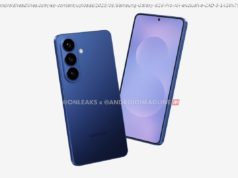Read the in depth Review of Samsung Galaxy A7 2018 Mobile Phone. Know Samsung Galaxy A7 2018 build, design and performance quality along with pros and cons.
The Samsung Galaxy A7 (2018) is for someone looking to maximise the smartphone imaging capabilties. In its price range, there are phones that have excellent primary camera. Spend a little more and the Asus Zenfone 5z offers a good enough wide-angle camera, but it’s can’t take good portrait shots. The Galaxy A7 (2018), on the other hand, seems to offer all three options to the user. You have a 24MP primary camera that works pretty good in the day time and decently enough in low-light. The wide-angle, even though it has a fixed focus, is good enough for the sweeping wide shots in the day. The portrait mode on the phone is also quite consistent and can take portraits that looks much more natural than what the Poco F1 can do. That’s what the Galaxy A7 (2018) brings to the table. It offers choice where others don’t. Otherwise, it’s not as great a performer, neither does it have most durable design and it certainly doesn’t have the longest battery life in its price range.
The year 2018 marked a tectonic shift in the way Samsung envisioned and marketed its mid-range phones. While the premium flagships, namely the Galaxy S series and the Note series continue to operate in the cutting edge, the mid-rangers have always lived under the looming shadows of them. Not anymore, though. Samsung Mobile’s head DJ Koh had declared that Samsung will bring never-before-seen innovation in phones. Little did we know his version of innovation is simply cramming more cameras on the back of the phone to bolster their chances of toppling the likes of OnePlus and Xiaomi, which have become its primary competition in India. Nevertheless, the Samsung Galaxy A7 arrived sporting not one, not two, but three cameras on the back. What was even more surprising is that the triple-camera setup was the first to arrive in a mid-ranger, instead of the flagship. It wouldn’t have been as surprising if it had been the other way round.
While there’s more to the Samsung Galaxy A7 (2018) than a triple-camera setup, Samsung’s marketing effort is primarily based around this feature. Naturally, our review focuses more on this aspect to see whether the heavy advertising about the triple-camera setup converts to usefulness. More than that, at a price point of Rs 23,990 and with compelling options like the Poco F1 and the Nokia 7 Plus, does it makes sense to buy the Samsung A7 (2018) instead? Let’s find out!
The Samsung Galaxy A7 (2018), despite carrying new innovations in the form of a triple-camera setup, borrows a lot from its premium flagship siblings. A glass body and a Super AMOLED Infinity Display with an 18:9 aspect ratio, to be precise. But it’s nowhere as ergonomic as the Galaxy S9. Instead, it retains the wide form factor of the company’s earlier Galaxy C9 Pro with a taller and a slightly larger display, but with the same height. It’s not as curved as the Galaxy S phones which has curved edges and rounded corners to help grip the phone better. This one is table-flat. As a result, it was difficult for my tiny hands to reach the other end of the screen. One-handed use is out of the question and you have to put both hands to use to type out a message.
The shape aside, the Galaxy A7 (2018) feels pretty solid with a sturdy aluminum frame housing the glass body. There’s no flex whatsoever, but the delicate glass body makes me skeptical. Especially since Samsung didn’t mention about any Gorilla Glass protection. The phone does come with a transparent case out of the box, but that can protect the shiny body from scratches and smudges, but still leaves the display vulnerable.
Fingerprint sensor now on the side, embedded in the power button
The Galaxy A7 (2018) is emboldened by Samsung’s decision to avoid the notch though. I’m good with having thin bezels around the screen over having to stare at a notch on a bright and vibrant display. The A7 (2018) also uses a micro-USB port for charging housed in the bottom. It is flanked by the endangered 3.5mm headphone jack and a tiny slit for the speaker. The phone’s left edge has nothing except the SIM card tray while on the right are the volume rockers and the power button with the fingerprint sensor embedded in it.
It’s another departure from the design Samsung had squared into in its flagships. But then, the placement of the fingerprint sensor has always been a controversial affair for the company ever since the Galaxy S8. Embedding it in the power button reduces the effort and it makes it more intuitive. Although coming from the Redmi Note 6 Pro, I kept reaching out to the rear panel out of muscle memory, but quickly got used to it. Even though it’s placed a little higher for me to reach naturally, the slight depression around th button makes it easy to find the button and the fingerprint sensor is quite responsive.
Many might feel the Galaxy A7’s design is a little outdated and for the most part, quite unwieldy, but it does make the phone classy and more expensive looking than what it’s retailing for.
Samsung is the largest supplier of smartphone displays. It even makes money off supplying OLED panels to Apple for the iPhones. The Super AMOLED displays the company makes are one of the best in the market.






